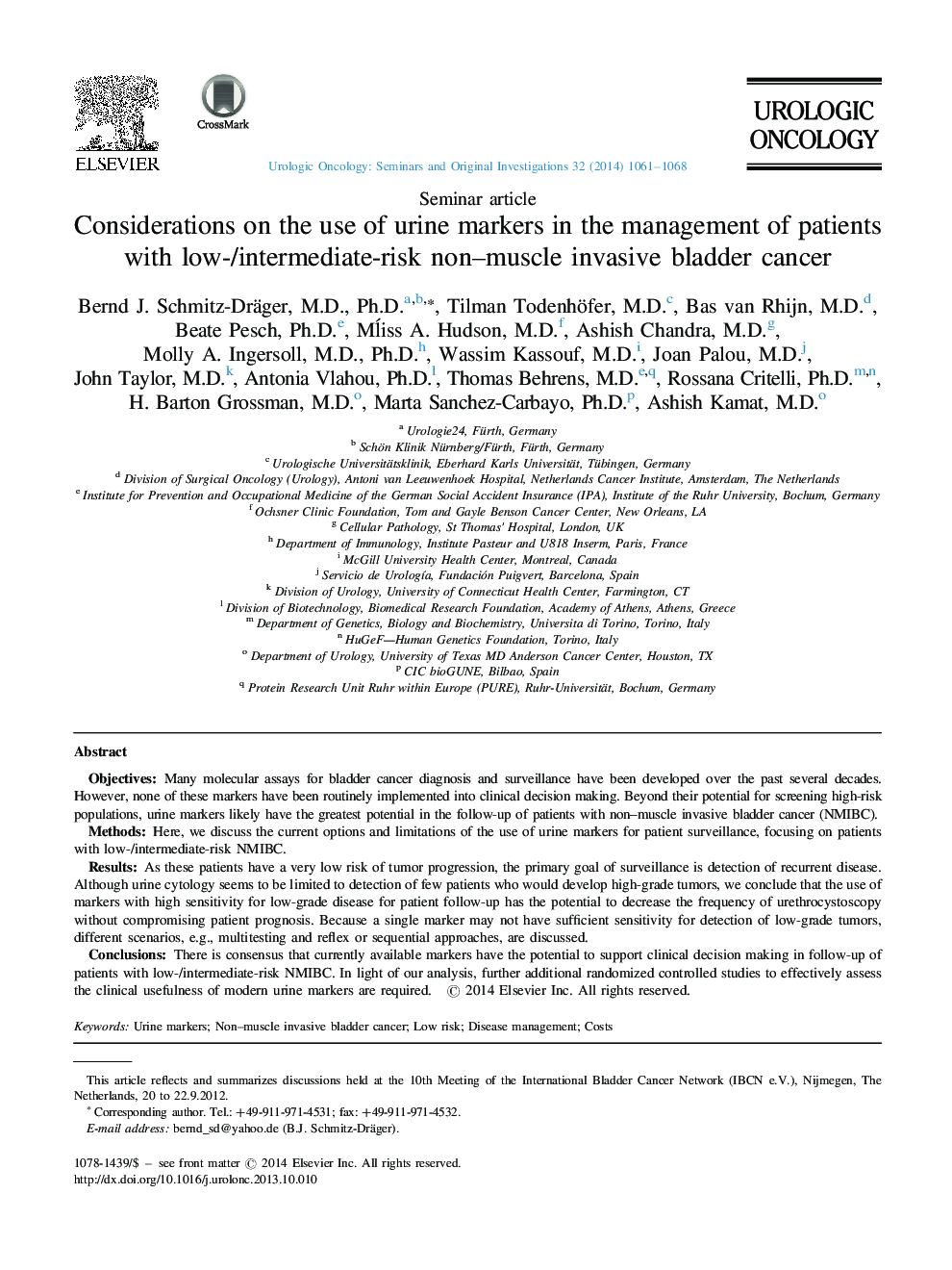| Article ID | Journal | Published Year | Pages | File Type |
|---|---|---|---|---|
| 3999825 | Urologic Oncology: Seminars and Original Investigations | 2014 | 8 Pages |
ObjectivesMany molecular assays for bladder cancer diagnosis and surveillance have been developed over the past several decades. However, none of these markers have been routinely implemented into clinical decision making. Beyond their potential for screening high-risk populations, urine markers likely have the greatest potential in the follow-up of patients with non–muscle invasive bladder cancer (NMIBC).MethodsHere, we discuss the current options and limitations of the use of urine markers for patient surveillance, focusing on patients with low-/intermediate-risk NMIBC.ResultsAs these patients have a very low risk of tumor progression, the primary goal of surveillance is detection of recurrent disease. Although urine cytology seems to be limited to detection of few patients who would develop high-grade tumors, we conclude that the use of markers with high sensitivity for low-grade disease for patient follow-up has the potential to decrease the frequency of urethrocystoscopy without compromising patient prognosis. Because a single marker may not have sufficient sensitivity for detection of low-grade tumors, different scenarios, e.g., multitesting and reflex or sequential approaches, are discussed.ConclusionsThere is consensus that currently available markers have the potential to support clinical decision making in follow-up of patients with low-/intermediate-risk NMIBC. In light of our analysis, further additional randomized controlled studies to effectively assess the clinical usefulness of modern urine markers are required.
